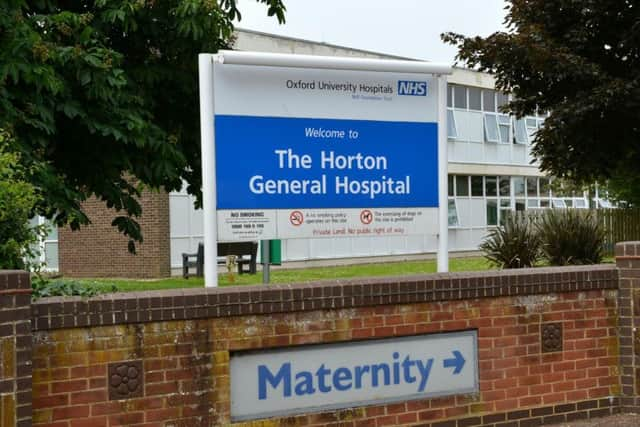Decision on Banbury's Horton maternity expected tomorrow


Banburyshire councillors have said the return of a consultant-led service is the only acceptable option they want in a system that would see Oxfordshire with two obstetric units - in Oxford and Banbury.
But Oxford University Hospitals NHS Trust (OUH) bosses have constantly complained of being unable to recruit enough obstetric doctors and special care baby unit (SCBU) nurses.
Advertisement
Hide AdAdvertisement
Hide AdWhen the Horton's unit was replaced by a midwife-only unit in October 2016, its consultants, some midwives and SCBU nurses were moved to the JR leaving only one midwife and an assistant on duty at any time with an emergency transfer ambulance waiting outside 24 hours a day.


At the same time in 2016 the trust closed 45 medical beds without having staged the obligatory public consultation. The bed closures and permanent downgrading of maternity were put forward in a public consultation the following January in the first stage of a forward plan for Oxfordshire which focused on the national NHS plan to provide fewer beds in hospitals and more care at home.
Cherwell District Council and Keep the Horton General (KTHG) campaign group took the Oxfordshire Clinical Commissioning Group to the High Court, claiming the consultation had been unlawful but though judges criticised the process, they said it was not sufficiently inadequate to be deemed unlawful.
KTHG took the case to appeal but lost.
In the meantime councillors on Oxfordshire Joint Health and Scrutiny Committee referred the maternity closure to the Secretary of State for Health, who asked the Independent Reconfiguration Panel (IRP) for a view. (The IRP had found in favour of retention of Horton services when the trust planned a full downgrading in 2006 saying Oxford was too far for patients in emergencies to travel.)


Advertisement
Hide AdAdvertisement
Hide AdThe IRP said the CCG should have included in their proposals residents of south Northants and south Warwickshire whose patients looked to the Horton for treatment and childbirth facilities. These patients had not been included in the January 2017 public consultation.
A Horton Health Overview and Scrutiny committee was formed to review the whole process. It first met a year ago. Since then the committee has been hearing evidence from all sides and last December spent one full day listening to personal experiences of women who had been forced to go to Oxford to give birth, all of whom had given their stories to KTHG for a dossier.
KTHG has also spent months this year researching other small obstetric units in England and Wales to find out whether claims that small units cannot be viable are true. A paper showing how many units, especially in remote areas, or run as two-centre options, are working very successfully.
The CCG Board is to publish its decision on the Horton unit's future tomorrow (Monday) and the chairman of the Horton HOSC, Cllr Arash Fatemian, will also release his chairman's report on the issue.
Advertisement
Hide AdAdvertisement
Hide AdThe decision comes only a fortnight before the CCG is due to have its new operating plan for the next five years delivered to NHS England. The CCG is to merge with the Bucks and Berkshire CCGs in the coming year in a Government move to redesign the single National Health Service into a system of 44 regional health organisations, each running on a set budget.